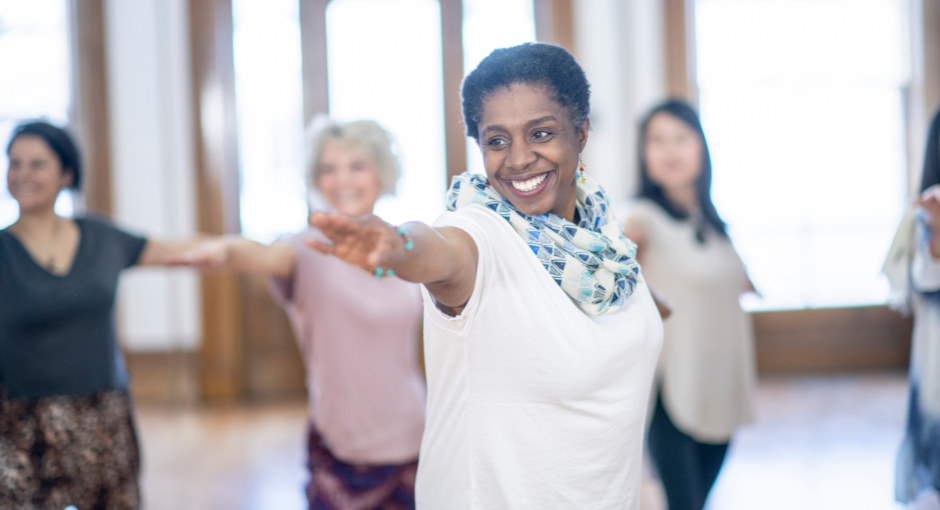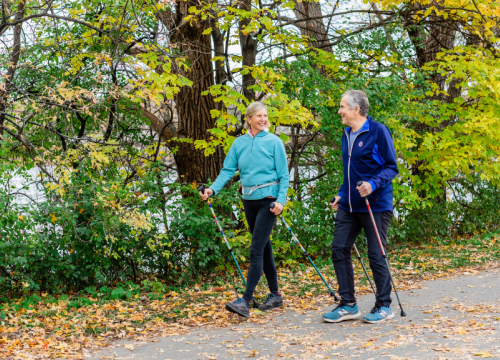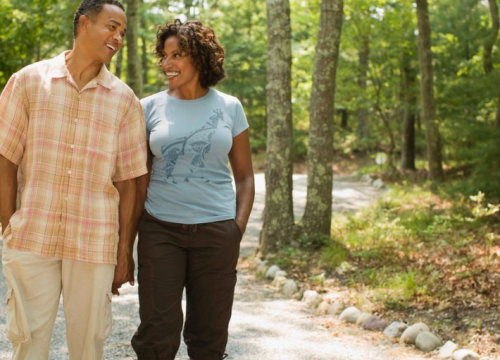Postural Instability (Balance & Falls)
💡 Quick Summary
-
Postural instability, or balance difficulty, is a major Parkinson’s symptom that increases risk of falls.
-
Exercise and early physical therapy can improve balance, posture and walking.
-
Home safety strategies help reduce fall hazards; an occupational therapist can perform a full home safety assessment.
-
Explore tips and strategies to prevent and manage falls.

Postural instability, or difficulty balancing, is possibly the most challenging of the major Parkinson’s disease (PD) movement symptoms.
Shakiness, stiffness and slow movement can change how a person walks. The addition of postural instability increases the risk of falls. Encouragingly, exercise is proven to improve gait and balance and reduce falls.
The best approach is to start exercising early and do your best to maintain good posture.
In addition to exercise, early physical therapy can be beneficial. You don’t need to wait until you are having trouble moving to start. A physical therapist can help you develop a general exercise plan and teach you specific exercises to maintain and improve balance and posture.
Home Safety Strategies
A safe home is vital to reducing fall risks. Here are some tips to ensure that your home is accessible:
- Remove throw rugs
- Keep areas well lit; use nightlights where necessary
- Install grab bars in the bathroom
- Install handrails on all stairs
- Clear clutter
- Avoid rolling chairs
It is helpful to go room by room through your home to make any needed adjustments that will create a safer home environment.
For a complete safety review of your home, ask your doctor for an in-home occupational therapist safety assessment or find a certified aging-in-place specialist (CAPS). You can locate a CAPS on the website of the National Association of Home Builders or by calling 1-800-368-5242.
Tips for Preventing Falls
People with Parkinson's can fall in different directions. Walking or turning can sometimes result in forward falls. Backward falls can happen while turning, standing or even sitting.
Minimize Fall Risk
- Avoid stepping backward. Instead, step sideways. Make a safe turn, then walk forward.
- Do not stand directly in front of the oven door, refrigerator door, microwave or other appliance you are trying to open. Instead stand slightly to the side and use a power stance — wide apart, staggered feet — with one hand on a stable surface.
If a Fall Occurs
- Remain calm. Feel and look for any pain or possible injuries before you try to get up. Plan your strategy carefully.
- Use a heavy piece of furniture to assist you in getting up. If you doubt your ability to safely get up alone, crawl or scoot to a phone and call for help.
If you are someone who frequently falls, it is recommended that you enroll in a home emergency response system. A physical therapist can also help you prepare a system in case a fall occurs.
Care partners should also know how to help someone get up after a fall. A transfer belt can provide you with a firm grip to aid the person as he or she rises.
Detailed instructions for how to get up from a fall, along with more posture and balance information and tips, can be found in the Parkinson’s Foundation publication Fitness Counts. Call our Helpline at 1-800-4PD-INFO (1-800-473-4636) to get your free copy.
Parkinson's Foundation Helpline
Contact our Helpline at 1-800-4PD-INFO (1-800-473-4636) or Helpline@Parkinson.org for answers to your Parkinson’s questions. Helpline specialists can assist you in English or Spanish, Monday through Friday, 9 a.m. to 7 p.m. ET.
Page reviewed by Dr. Jun Yu, Movement Disorders Fellow at the University of Florida, a Parkinson’s Foundation Center of Excellence.


